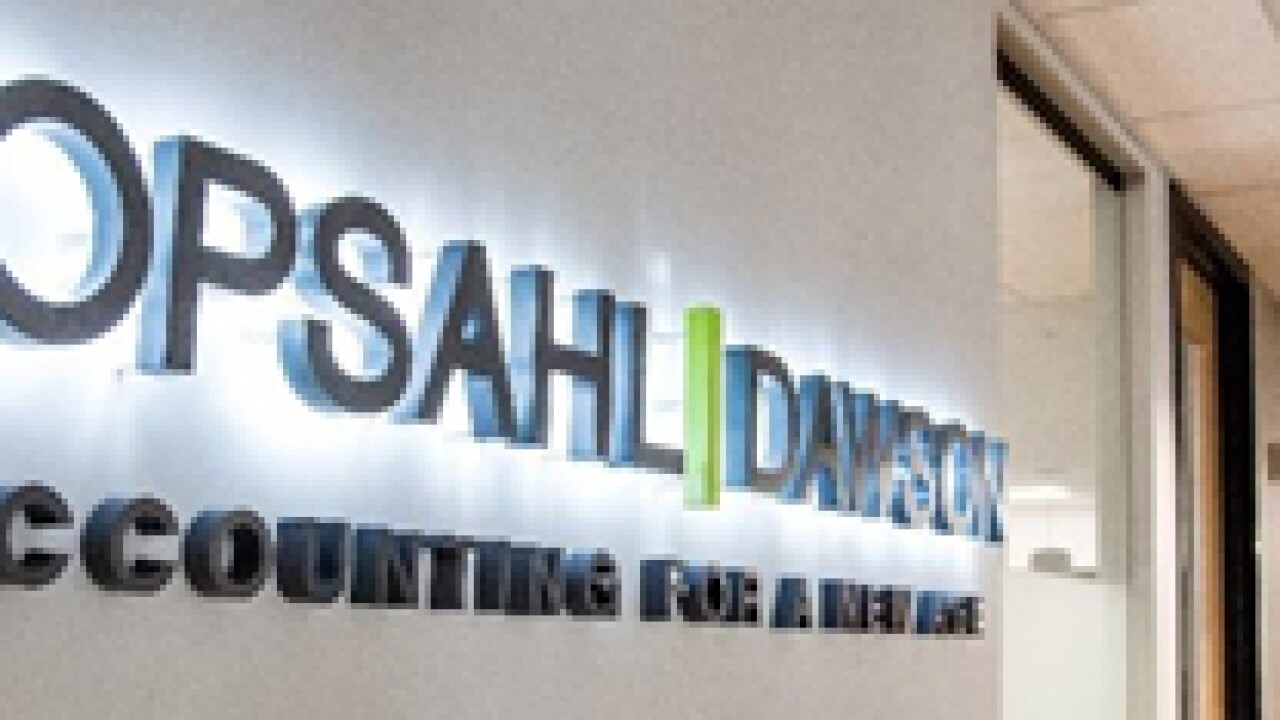Most firms and companies are focusing on how they can be more innovative and creative, especially in the areas of automation and value-added process improvement. The story and how you frame the innovation may be more important than the innovation. Remember that most innovation starts as a bad idea, especially to those it is going to disrupt. Therefore, communication and framing of the message are of utmost importance in any organization. I am aware of numerous firms that are investing heavily in innovation, yet are frustrated because many in higher-level positions are resisting the change and unwilling to “upskill” (learn new skills) and change.
Many firms are fixated on innovation and investing in leadership that can change the mindsets, skill sets and toolsets necessary to sustain success and be future-ready. Some of the more important things they are doing:
1. Naming a leader in charge of innovation. The titles vary depending upon the size of the organization and percent of time the individual focuses on innovation.
2. Utilizing small task forces to focus on specific projects or processes. These task forces are given a short time period (a few weeks or months) and a relatively small budget.
3. Holding contests and promoting innovation at all levels. Some of the best results come from the lower levels in a firm where people are closer to processes and the workflow. We refer to this as the “bubbling company,” much like a pot of water boils.
4. Joining and participating in peer networks where they learn from others and a safe environment to think and plan. It is also a great way to avoid the status quo and disrupt yourself and your firm.
5. Developing processes for soliciting, prioritizing, funding and executing innovative ideas within the firm. This is dynamic as, initially, the firm will need to generate ideas, but later in the evolution, it will be more of a focus on funding and execution of the ideas with the most potential for return on investment. The firm needs to expect failure and learn to fail fast.
6. Looking outside of the profession — and particularly at Silicon Valley companies that think differently about technology. Think of Intuit as a Silicon Valley company that produces software for small businesses while Wolters Kluwer and Thomson Reuters are publishing companies with software divisions. All innovate, but Inuit is more calculated with their “design for delight” process and focus on small business.
Most innovation travels along a well-orchestrated path, and therefore the need for the story and proper framing is very important for internal and external consumption. A recent McKinsey article focused on how to best frame the communication with a variety of strategies. They also disclosed which strategy produced the most contestants at their Real Innovation Awards in London. Project management, marketing and sales skills generally are not brought into innovation early enough in the process, and most accountants view innovation from a technical perspective. Thus, the need for framing and the right storyline to gain traction. There is also the need to filter projects by clearly defining expectations, evaluating potential return, and evaluating the cost of not investing (this part of the equation is often ignored).
Let’s review some of the more common innovation strategies to understand what might have been done better to increase velocity and success.
Best beats first to market. While this strategy can be effective, it sometimes is used as an excuse to not invest or to procrastinate. Market dominators often use this strategy, buy the competitor and copy after the idea is accepted by the market.
From a framing perspective, it is important to tell a story that differentiates you from the market, not how you got there. In my opinion, a good example in the accounting software market is SurePrep’s TaxCaddy, which focuses on the client experience, workflow and integration. Most firms have utilized portals, which clients dislike or don’t use. Portals have been around for over 10 years, yet the adoption rate has been limited.
The master of reinvention. The firm challenges or disrupts itself, rather than being challenged by innovators. Most innovators leave large organizations due to the resistance to change and lack of an innovative culture.
The storyline should be centered around transformation and rebirth, not the history and previous success of the firm. Firms disrupting themselves often cannibalize legacy services before upstart competitors do. The old exercise of sow-grow-harvest-plow is relevant to all organizations. The most difficult task is to plow any existing service. People want to hear about the emergence of the butterfly and not the demise of the caterpillar. An example of this type of innovation is the firms currently reimagining the future of auditing by evaluating both processes and technology. A good example of the storyline is: We reinvented ourselves for a changing world where clients need and want more. Amazon is another good example where the message is all about the future.
Serendipity. This strategy involves luck or stumbling upon something unusual and then having the foresight to capitalize. A good example is Art Fry at 3M and the birth of Post-It Notes.

The story should be about being astute enough to see the opportunity when it happened. In accounting firms, this typically happens in advisory and consulting services where the consultants start seeing the need or want in multiple clients. Also, remember that clients are willing to pay more for what they want than for what they need. Too often, clients perceive what you give at the highest value and what you charge for at the lowest value. Great consultants have a process to determine clients’ dangers, opportunities and strengths, allowing them the opportunity to add value.
Perspiration. This strategy is all about hard work and tenacity. The key is to be able to tell the same story, but demonstrate results/progress. It is easy to get caught in the incremental and local thinking trap — 10X thinking will help you avoid the trap and develop strategies that will produce exponential and global results.
Your story should be about the learning, experimentation and pivoting that makes perseverance pay off. Good examples of this are Thomas Edison and James Dyson. Frankly, the client doesn’t care how hard you work or the time invested; they are interested in the experience and results.
Underdog. Do you know someone who is fighting the system? The system can be leadership, internal processes or those individuals being disrupted. Examples of the underdog are Steve Jobs and Elon Musk who thrive on battles and proving others wrong. Most entrepreneurs and innovators don’t have the financial support and time to prove others wrong. Vision, stubbornness and resilience are key qualities.
The storyline of the underdog is generally framed on vision and stubbornness in proving others wrong. Both Jobs and Musk have their followers and detractors. Underdogs in the accounting profession tend to leave and focus on industries with a larger market.
Ride the winds of change. External forces propel things forward at a unique point in time. The storyline credits the idea’s originator as being at the right place at the right time, while deftly navigating the economic or political currents that have converged to make success almost inevitable. Surprisingly, McKinsey disclosed that 45 percent of the innovative ideas at the awards come from the winds of change.
Upon further thought, this is exactly what is happening in the accounting profession. It is a powerful and less risky approach and one the accounting profession should utilize with the convergence of technology and increased regulation. The storyline should be: We saw the convergence of technology/trends and positioned ourselves accordingly.
Blockchain and big data are just two of the current disruptors where individuals and firms can upskill and become thought leaders. The big question today is, will blockchain replace the importance of big data or vice versa? There are currently debates over Google’s and Facebook’s model (free, but they control your data, and fee-based, but you control your own privacy and data). Most apps today were built under the free model, with little thought to security and privacy.
Therefore, it is important to become a thought leader, but not necessarily easy. You normally must give something up from the past to advance into the future. Remember the sow-grow-harvest-plow exercise and the importance of innovation to sustain success and remain future-ready? What are you going to plow (discard) and sow (innovate)?





